1 of 31
Downloaded 16 times

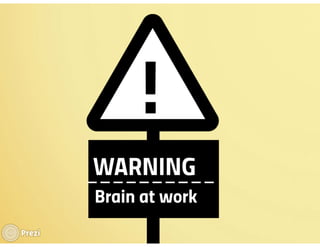

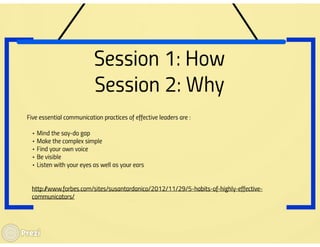
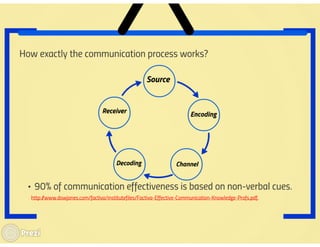
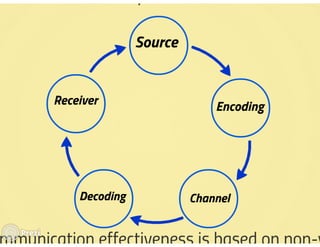
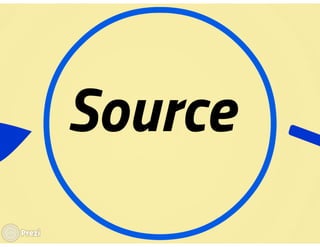
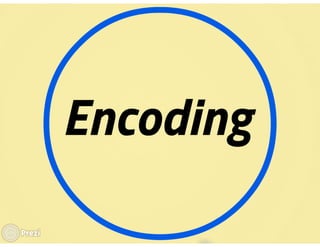
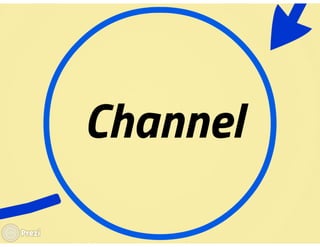
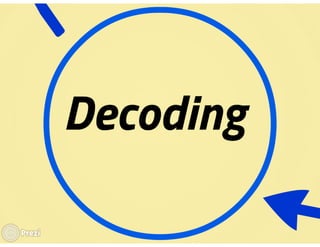


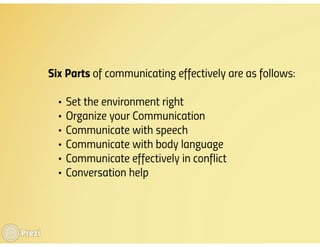
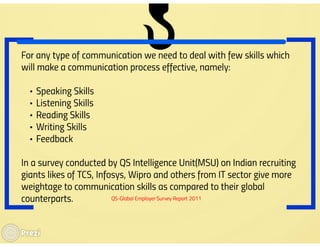

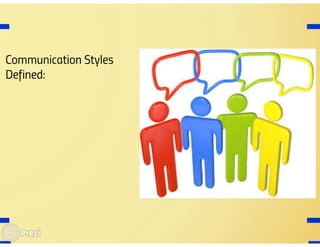
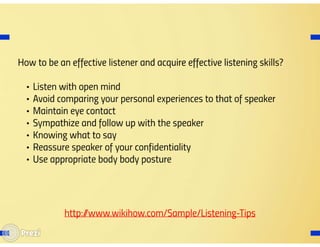
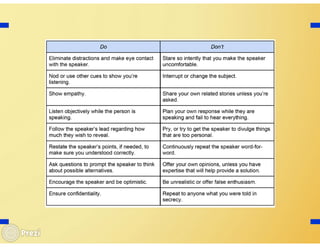

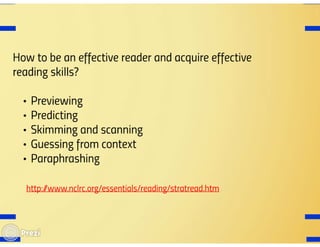
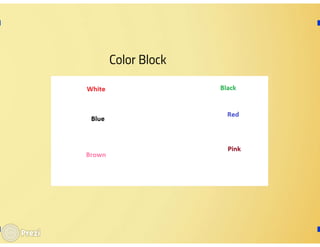


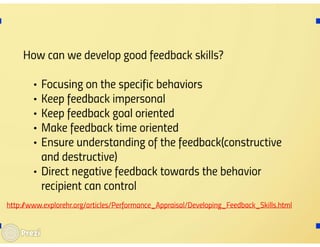







Ad
Recommended
Integumentary System
Integumentary Systemgueste8aa65
Ã˝
The document provides information about the human body's integumentary, skeletal, and muscular systems. It describes the structure and functions of skin, bones, joints, and muscles. Key points include that skin is the body's largest organ, bones provide structure and store minerals, and muscles work in opposing pairs to enable movement when contracted or relaxed.Circusystem
CircusystemEnigmatic You
Ã˝
The circulatory system transports nutrients, gases, hormones, blood cells, and other substances to and from cells in the body. It consists of the cardiovascular system, which circulates blood, and the lymphatic system, which circulates lymph. The cardiovascular system includes the heart, blood, and blood vessels. It has two circuits: pulmonary circulation through the lungs, and systemic circulation through the rest of the body. The lymphatic system transports excess fluid filtered from blood and returns it to the bloodstream.Commonly Misused Words in the English Language (IELTS and TOEFL Training)
Commonly Misused Words in the English Language (IELTS and TOEFL Training)JROOZ Review Center
Ã˝
The document outlines various commonly confused word pairs, explaining their meanings with examples. It provides definitions for pairs like 'accept/except', 'imminent/eminent', and 'affect/effect', among others. Additionally, it promotes Jrooz Review Center Inc. as a resource for achieving target scores in IELTS and TOEFL exams.Hema practical 05 hema staining
Hema practical 05 hema stainingMBBS IMS MSU
Ã˝
This document provides instructions for several common pathology laboratory procedures using capillary blood samples including preparing blood films, performing Leishman's and Giemsa staining, measuring coagulation time using the slide method, and determining blood groups also using the slide method. It notes that capillary puncture is preferred for peripheral blood smears and that the site should not be squeezed to obtain blood as that alters the composition and invalidates test results. Warming extremities may facilitate blood collection.Digestive System And Endocrine
Digestive System And Endocrinegueste8aa65
Ã˝
The document summarizes the digestive and endocrine systems. The digestive system breaks down food through mechanical and chemical digestion in the mouth, stomach, small intestine, large intestine, and eliminates waste. The endocrine system regulates processes like growth and metabolism through hormones released by glands like the pituitary, which signal other glands and organs. Both systems work together to maintain homeostasis.Platelets
Plateletsanju jha
Ã˝
The document summarizes the history and characteristics of platelets. It describes key discoveries such as George Gulliver drawing early platelet images in 1841 and Max Schultze describing "spherules" in 1865. The document outlines platelet formation in the bone marrow, structure, granule contents, functions in hemostasis, testing of platelet function, causes of low and high platelet counts, and associated conditions.Human centered design
Human centered designAnupam Verma
Ã˝
Human-centered design is a six-phase process focused on creating solutions tailored to users' needs, starting with observation and ending with implementation. It emphasizes empathy, ideation, prototyping, user feedback, and iteration to refine the design. Case studies include a mobile classroom chair and a self-testing monitor for home use, showcasing the application of this design approach in various contexts.Hysterectomy past present & future
Hysterectomy past present & futureSandesh Kamdi
Ã˝
The document discusses the history and evolution of hysterectomy techniques including vaginal, abdominal, laparoscopic, and robotic hysterectomy. It notes that the first recorded hysterectomy was performed vaginally in 50 BC in Greece. Abdominal hysterectomy became more common in the 19th century after the first successful laparotomy. Laparoscopic hysterectomy was pioneered in the early 20th century but robotic hysterectomy using the da Vinci system became popular in the late 20th/early 21st century. Studies discussed found vaginal hysterectomy has better outcomes than abdominal or laparoscopic with less complications, shorter recovery time, and lower costs.NA Dynamics - E-Learning
NA Dynamics - E-Learningharrywwh
Ã˝
The document discusses forces and friction. It begins by stating the learning objectives of identifying forces on objects using free body diagrams and explaining the effects of friction. It then defines different types of forces - contact forces like normal reaction and tension, and non-contact forces like gravitational, electric, and magnetic. It also discusses how to draw free body diagrams and examples like a crate held by a string. Finally, it defines friction as the opposing contact force and discusses how friction affects motion, giving examples like braking a car. It ends by stating some factors that affect the frictional force between surfaces.Digestive system 2011
Digestive system 2011whitchur
Ã˝
The document provides an overview of the digestive system, including:
- The main function of the digestive system is to digest food, absorb nutrients, and eliminate waste.
- The organs that make up the gastrointestinal tract include the oral cavity, pharynx, esophagus, stomach, small intestine, and colon.
- Accessory organs that aid in digestion include the pancreas, liver, and gallbladder.
- Digestion begins in the mouth and progresses through the gastrointestinal tract with the help of mechanical and chemical breakdown of food.18 [chapter 18 the endocrine system]
18 [chapter 18 the endocrine system]Sompoch Thanachaikan
Ã˝
The document summarizes key aspects of the endocrine system. It describes how the nervous and endocrine systems work together to coordinate the body's systems. It defines endocrine and exocrine glands, and lists the major endocrine glands like the pituitary, thyroid, and adrenals. It explains how hormones are released and travel through the bloodstream to target cells, and the different mechanisms of hormone action. Negative and positive feedback loops that regulate hormone secretion are also discussed.Liver Transplantation
Liver Transplantationlevouge777
Ã˝
Liver transplantation involves surgically removing a diseased liver and replacing it with a healthy donor liver. The most common reasons for transplantation are cirrhosis caused by hepatitis C infection and liver failure in children from biliary atresia. After surgery, patients must take lifelong immunosuppressive medications to prevent rejection of the new liver and experience side effects like infection risk from the anti-rejection drugs.Comparing Fractions
Comparing Fractionsitutor
Ã˝
This document discusses different methods for comparing fractions, including:
1) Comparing fractions with the same denominator by looking at the numerators
2) Making the denominators the same by finding the least common multiple before comparing
3) Comparing fractions by multiplying the numerators and denominators
4) Converting fractions to decimals and comparing the decimal forms
The key steps are to simplify the fractions to have a common denominator or convert to decimals before determining which fraction is greater.Curso ingles 1000 palabras mas utilizadasF Blanco
Ã˝
Este documento proporciona una lista de las 1000 palabras más utilizadas en inglés y su traducción al español. La lista incluye las palabras en inglés ordenadas de más a menos utilizadas, junto con su equivalente traducción al español.DIAGRAM. MACHINES & STRUCTURESpablojgd
Ã˝
El documento describe las máquinas y estructuras. Define una máquina como algo que nos ayuda a realizar un trabajo con menos esfuerzo. Luego enumera las seis máquinas simples y sus partes, así como las máquinas complejas y sus componentes. También describe las herramientas, los tipos de estructuras y sus partes.Vulcan tutorial 01
Vulcan tutorial 01VR M
Ã˝
This document provides instructions for various tasks in Vulcan software including:
1. Importing and exporting files between Vulcan and other formats like DXF and ASCII. It also covers uploading files to databases.
2. Creating surfaces, contours, sections and views of topography as well as checking and editing drillhole databases.
3. Instructions for constructing solids from polygons, joining surfaces, and plotting plans.
4. The document concludes with notes on exporting block models, importing ASCII block models, and generating statistics.Lec63 (reproductive system female)
Lec63 (reproductive system female)MBBS IMS MSU
Ã˝
The female reproductive system has several key functions: producing hormones, forming eggs, and developing offspring. The main organs are the ovaries, which produce eggs and hormones; the uterine tubes, which transport eggs; and the uterus, which nourishes development. The vagina serves as the birth canal. Eggs develop through oogenesis and are released during ovulation approximately every 28 days as part of the ovarian cycle.Chapter 35 lecture- Nervous System
Chapter 35 lecture- Nervous SystemMary Beth Smith
Ã˝
The document summarizes the main systems and structures of the human body. It discusses the organization of cells into tissues, organs and organ systems. It then provides details on the 11 major organ systems, including their structures and functions. It also describes the central and peripheral nervous systems, neurons, nerve impulses, and the senses.Press law 2 okay
Press law 2 okayVivie Chabie
Ã˝
This document discusses laws related to freedom of the press and speech in Indonesia. It covers several key points:
1) Laws such as the 1945 Constitution and Press Law aim to protect freedom of speech and press to allow for oversight of government and horizontal dialogue between citizens.
2) International agreements like the Universal Declaration of Human Rights also protect these freedoms as fundamental human rights.
3) The Indonesian press is meant to uphold democracy, rule of law, and human rights while informing the public and developing opinion based on accurate information.
4) Journalists have rights like rejecting revealing sources but also obligations to respect religious and social norms and presumption of innocence.The female reproductive system
The female reproductive systemmohit rulaniya
Ã˝
The female reproductive system produces a finite number of eggs during a woman's lifetime. During fetal development, millions of primordial follicles form in the ovaries, but many degenerate, leaving a few hundred thousand at birth and only 400 that will mature. Each month during a woman's reproductive years, hormones cause follicles to mature and eggs to be released through ovulation. If fertilization does not occur, the corpus luteum breaks down and menstruation begins.Vitamins and nervous system
Vitamins and nervous system NeurologyKota
Ã˝
Vitamin deficiencies can cause neurological manifestations. Cobalamin (vitamin B12) deficiency results in subacute combined degeneration, presenting with paresthesias, weakness, and spinal cord lesions. Folate deficiency causes similar symptoms. Vitamin E deficiency leads to spinocerebellar degeneration. Pellagra due to niacin deficiency can cause diarrhea, dermatitis, dementia, and other neurological symptoms. Pyridoxine deficiency can cause seizures in infants or neuropathy in adults. High doses of pyridoxine supplementation itself can cause neuropathy. Timely treatment of deficiencies can improve or stabilize neurological symptoms.Assessment 4 (reproduction)
Assessment 4 (reproduction)animalcareplc2012
Ã˝
This document contains a revision sheet for an animal anatomy and physiology exam worth 100 marks. It lists 6 questions covering key reproductive terms, the stages of the menstrual cycle and hormonal effects, causes and treatments of infertility in males and females, differences between avian and animal reproduction, and signs that an animal is in heat. Students are asked to explain, outline, describe, list, and label various reproductive concepts in their answers.Assignment1
Assignment1Kevin Young
Ã˝
Our first group assignment for Tina Seelig's Crash Course on Creativity. Of course, we wished we could have been MORE creative, but we hope you enjoy!Sigmund Freud
Sigmund Freudadamn22
Ã˝
Sigmund Freud believed that people should strive to be in harmony with their complexes rather than try to eliminate them, as complexes are what guide human behavior. Freud developed many influential theories of psychoanalysis, including the concepts of the id, ego and superego; defense mechanisms; the interpretation of dreams; and the Oedipus complex. Although some of Freud's ideas seem abstract, the foundations of modern psychology are based on his theories of the human psyche.Official Elisa Powerpoint
Official Elisa Powerpointscience_lablinks
Ã˝
The document outlines the ELISA Immuno Explorer Kit, designed for educational use in teaching immunology and antibody specificity in various real-world applications such as disease detection and biodefense. It provides comprehensive resources for hands-on learning, including reagents and protocols for tracking diseases and detecting antigens and antibodies. The kit allows students to conduct experiments in approximately 45 minutes, making it a cost-effective and engaging educational tool for science curricula.PPT on implementing Kirkpatrickk Model
PPT on implementing Kirkpatrickk ModelShobitash Jamwal
Ã˝
This document discusses implementing an effectiveness measurement tool for training and development (T&D) programs using Microsoft Excel. It outlines Kirkpatrick's four-level model for evaluating T&D programs and describes a sample process using reaction, learning, and behavior forms to measure effectiveness at each stage. Key steps include collecting scores from participant reaction forms after training, learning forms one month post-training, and behavior forms from line managers. The tool calculates scores at each stage and marks programs as effective or ineffective based on pre-set thresholds. Screenshots demonstrate the tool's layout and color-coded results.More Related Content
Viewers also liked (17)
NA Dynamics - E-Learning
NA Dynamics - E-Learningharrywwh
Ã˝
The document discusses forces and friction. It begins by stating the learning objectives of identifying forces on objects using free body diagrams and explaining the effects of friction. It then defines different types of forces - contact forces like normal reaction and tension, and non-contact forces like gravitational, electric, and magnetic. It also discusses how to draw free body diagrams and examples like a crate held by a string. Finally, it defines friction as the opposing contact force and discusses how friction affects motion, giving examples like braking a car. It ends by stating some factors that affect the frictional force between surfaces.Digestive system 2011
Digestive system 2011whitchur
Ã˝
The document provides an overview of the digestive system, including:
- The main function of the digestive system is to digest food, absorb nutrients, and eliminate waste.
- The organs that make up the gastrointestinal tract include the oral cavity, pharynx, esophagus, stomach, small intestine, and colon.
- Accessory organs that aid in digestion include the pancreas, liver, and gallbladder.
- Digestion begins in the mouth and progresses through the gastrointestinal tract with the help of mechanical and chemical breakdown of food.18 [chapter 18 the endocrine system]
18 [chapter 18 the endocrine system]Sompoch Thanachaikan
Ã˝
The document summarizes key aspects of the endocrine system. It describes how the nervous and endocrine systems work together to coordinate the body's systems. It defines endocrine and exocrine glands, and lists the major endocrine glands like the pituitary, thyroid, and adrenals. It explains how hormones are released and travel through the bloodstream to target cells, and the different mechanisms of hormone action. Negative and positive feedback loops that regulate hormone secretion are also discussed.Liver Transplantation
Liver Transplantationlevouge777
Ã˝
Liver transplantation involves surgically removing a diseased liver and replacing it with a healthy donor liver. The most common reasons for transplantation are cirrhosis caused by hepatitis C infection and liver failure in children from biliary atresia. After surgery, patients must take lifelong immunosuppressive medications to prevent rejection of the new liver and experience side effects like infection risk from the anti-rejection drugs.Comparing Fractions
Comparing Fractionsitutor
Ã˝
This document discusses different methods for comparing fractions, including:
1) Comparing fractions with the same denominator by looking at the numerators
2) Making the denominators the same by finding the least common multiple before comparing
3) Comparing fractions by multiplying the numerators and denominators
4) Converting fractions to decimals and comparing the decimal forms
The key steps are to simplify the fractions to have a common denominator or convert to decimals before determining which fraction is greater.Curso ingles 1000 palabras mas utilizadasF Blanco
Ã˝
Este documento proporciona una lista de las 1000 palabras más utilizadas en inglés y su traducción al español. La lista incluye las palabras en inglés ordenadas de más a menos utilizadas, junto con su equivalente traducción al español.DIAGRAM. MACHINES & STRUCTURESpablojgd
Ã˝
El documento describe las máquinas y estructuras. Define una máquina como algo que nos ayuda a realizar un trabajo con menos esfuerzo. Luego enumera las seis máquinas simples y sus partes, así como las máquinas complejas y sus componentes. También describe las herramientas, los tipos de estructuras y sus partes.Vulcan tutorial 01
Vulcan tutorial 01VR M
Ã˝
This document provides instructions for various tasks in Vulcan software including:
1. Importing and exporting files between Vulcan and other formats like DXF and ASCII. It also covers uploading files to databases.
2. Creating surfaces, contours, sections and views of topography as well as checking and editing drillhole databases.
3. Instructions for constructing solids from polygons, joining surfaces, and plotting plans.
4. The document concludes with notes on exporting block models, importing ASCII block models, and generating statistics.Lec63 (reproductive system female)
Lec63 (reproductive system female)MBBS IMS MSU
Ã˝
The female reproductive system has several key functions: producing hormones, forming eggs, and developing offspring. The main organs are the ovaries, which produce eggs and hormones; the uterine tubes, which transport eggs; and the uterus, which nourishes development. The vagina serves as the birth canal. Eggs develop through oogenesis and are released during ovulation approximately every 28 days as part of the ovarian cycle.Chapter 35 lecture- Nervous System
Chapter 35 lecture- Nervous SystemMary Beth Smith
Ã˝
The document summarizes the main systems and structures of the human body. It discusses the organization of cells into tissues, organs and organ systems. It then provides details on the 11 major organ systems, including their structures and functions. It also describes the central and peripheral nervous systems, neurons, nerve impulses, and the senses.Press law 2 okay
Press law 2 okayVivie Chabie
Ã˝
This document discusses laws related to freedom of the press and speech in Indonesia. It covers several key points:
1) Laws such as the 1945 Constitution and Press Law aim to protect freedom of speech and press to allow for oversight of government and horizontal dialogue between citizens.
2) International agreements like the Universal Declaration of Human Rights also protect these freedoms as fundamental human rights.
3) The Indonesian press is meant to uphold democracy, rule of law, and human rights while informing the public and developing opinion based on accurate information.
4) Journalists have rights like rejecting revealing sources but also obligations to respect religious and social norms and presumption of innocence.The female reproductive system
The female reproductive systemmohit rulaniya
Ã˝
The female reproductive system produces a finite number of eggs during a woman's lifetime. During fetal development, millions of primordial follicles form in the ovaries, but many degenerate, leaving a few hundred thousand at birth and only 400 that will mature. Each month during a woman's reproductive years, hormones cause follicles to mature and eggs to be released through ovulation. If fertilization does not occur, the corpus luteum breaks down and menstruation begins.Vitamins and nervous system
Vitamins and nervous system NeurologyKota
Ã˝
Vitamin deficiencies can cause neurological manifestations. Cobalamin (vitamin B12) deficiency results in subacute combined degeneration, presenting with paresthesias, weakness, and spinal cord lesions. Folate deficiency causes similar symptoms. Vitamin E deficiency leads to spinocerebellar degeneration. Pellagra due to niacin deficiency can cause diarrhea, dermatitis, dementia, and other neurological symptoms. Pyridoxine deficiency can cause seizures in infants or neuropathy in adults. High doses of pyridoxine supplementation itself can cause neuropathy. Timely treatment of deficiencies can improve or stabilize neurological symptoms.Assessment 4 (reproduction)
Assessment 4 (reproduction)animalcareplc2012
Ã˝
This document contains a revision sheet for an animal anatomy and physiology exam worth 100 marks. It lists 6 questions covering key reproductive terms, the stages of the menstrual cycle and hormonal effects, causes and treatments of infertility in males and females, differences between avian and animal reproduction, and signs that an animal is in heat. Students are asked to explain, outline, describe, list, and label various reproductive concepts in their answers.Assignment1
Assignment1Kevin Young
Ã˝
Our first group assignment for Tina Seelig's Crash Course on Creativity. Of course, we wished we could have been MORE creative, but we hope you enjoy!Sigmund Freud
Sigmund Freudadamn22
Ã˝
Sigmund Freud believed that people should strive to be in harmony with their complexes rather than try to eliminate them, as complexes are what guide human behavior. Freud developed many influential theories of psychoanalysis, including the concepts of the id, ego and superego; defense mechanisms; the interpretation of dreams; and the Oedipus complex. Although some of Freud's ideas seem abstract, the foundations of modern psychology are based on his theories of the human psyche.Official Elisa Powerpoint
Official Elisa Powerpointscience_lablinks
Ã˝
The document outlines the ELISA Immuno Explorer Kit, designed for educational use in teaching immunology and antibody specificity in various real-world applications such as disease detection and biodefense. It provides comprehensive resources for hands-on learning, including reagents and protocols for tracking diseases and detecting antigens and antibodies. The kit allows students to conduct experiments in approximately 45 minutes, making it a cost-effective and engaging educational tool for science curricula.More from Shobitash Jamwal (14)
PPT on implementing Kirkpatrickk Model
PPT on implementing Kirkpatrickk ModelShobitash Jamwal
Ã˝
This document discusses implementing an effectiveness measurement tool for training and development (T&D) programs using Microsoft Excel. It outlines Kirkpatrick's four-level model for evaluating T&D programs and describes a sample process using reaction, learning, and behavior forms to measure effectiveness at each stage. Key steps include collecting scores from participant reaction forms after training, learning forms one month post-training, and behavior forms from line managers. The tool calculates scores at each stage and marks programs as effective or ineffective based on pre-set thresholds. Screenshots demonstrate the tool's layout and color-coded results.Human resource accounting and audit
Human resource accounting and auditShobitash Jamwal
Ã˝
This document discusses human resource accounting and auditing. It defines human resource accounting as identifying, measuring, and communicating data about human resources. Several methods of valuing human resources are described, such as historical cost and replacement cost. The document also discusses the objectives, scope, and approaches of conducting human resource audits within an organization. It provides guidelines on planning and conducting audits to evaluate the effectiveness of HR functions and ensure legal compliance.Case on fixation of minimum wages under –
Case on fixation of minimum wages under –Shobitash Jamwal
Ã˝
The document summarizes a Supreme Court of India case on the fixation of minimum wages under the Minimum Wages Act of 1948. It discusses that the appellant Lingegowd Detective & Security Chamber challenged orders passed by an authority under the Act, as their employment of providing security personnel was not a scheduled employment. The single judge court allowed the writ petitions, but directed payment of ex-gratia to workers. The division bench set aside this order, but the Supreme Court restored the single judge's order, finding that detective services were not a scheduled employment and the appellant had no liability to pay minimum wages.Product Quality
Product QualityShobitash Jamwal
Ã˝
Total quality management aims to integrate all organizational functions to focus on meeting customer needs and organizational objectives. TQM depends on participation from all members to improve processes, products, services, and work culture. The presentation discusses key aspects of TQM including a focus on customers, continuous improvement, and employee empowerment. It also provides examples of successful TQM implementation at Toyota and Mahindra & Mahindra.Introduction to organizational change
Introduction to organizational changeShobitash Jamwal
Ã˝
Organizational change is about reviewing and modifying management structures and business processes in response to internal and external forces. The document discusses several models and strategies for managing organizational change including Leavitt's model of change involving tasks, technology, structure and people. It also discusses different triggers for change including performance issues, new leadership, increased competition and technological developments. Key challenges for implementing change include communicating vision, following new practices, and balancing individual, functional and company needs during change.Swot analysis , Pest Analysis and Porter's 5 force model
Swot analysis , Pest Analysis and Porter's 5 force modelShobitash Jamwal
Ã˝
This document provides an analysis of the television and soft drinks industries. It begins by defining what an industry is and provides examples. It then discusses how industries can be classified, noting they can be divided into primary, secondary, tertiary, quaternary, and sometimes quinary sectors based on their activities. The document proceeds to discuss key aspects of the television and soft drinks industries, including major players, raw materials, and future prospects. It analyzes factors like the growth of 4K and smart TVs in television and health consciousness in soft drinks. The analysis concludes with a discussion of competition within the industries and an example SWOT analysis of Coca-Cola.Book review for Immortals of Meluha
Book review for Immortals of MeluhaShobitash Jamwal
Ã˝
The book review summarizes the novel "Immortals Of Meluha" by Amish Tripathi. It discusses the author and his writing style, the themes of the book, and characters. The book is described as using Hindu legends and mythology to tell a new story. It redefines concepts like virtue and vice. The review provides a 3 sentence summary of the plot, describing Shiva considering moving from Mount Kailash to the land of Meluha for a better life, and discovering he is destined to save Meluha when his throat turns blue after drinking an elixir of life.Theories of personality
Theories of personality Shobitash Jamwal
Ã˝
This document discusses several theories of personality, including psychoanalytic perspectives proposed by Sigmund Freud, Carl Jung, Alfred Adler, and William Sheldon. Freud believed personality is composed of the id, ego, and superego and develops through psychosexual stages in childhood. Jung proposed the collective unconscious containing archetypes and described introversion and extroversion. Adler emphasized feelings of inferiority and superiority. Sheldon categorized body types as endomorph, mesomorph, and ectomorph. While contributing ideas about unconscious forces and early influences, psychoanalytic theories have also been criticized as vague and relying too heavily on case studies with potential distortions.Role of computers in sales and marketing scm & crm
Role of computers in sales and marketing scm & crmShobitash Jamwal
Ã˝
Computers play an important role in business applications like marketing, sales, customer relationship management (CRM), and supply chain management (SCM). In marketing, computers allow for digital promotion, online surveys, e-commerce distribution and advertising. CRM systems help manage customer data to improve relationships. Computers also facilitate inventory management, financial management, and human resources. Emerging technologies like radio frequency identification (RFID) and voice systems further aid supply chain integration and web-based ordering. Overall, computerization improves business processes, cuts costs, and strengthens customer service.Grammar elements and their effect on writing
Grammar elements and their effect on writingShobitash Jamwal
Ã˝
Proper grammar is essential for effective communication and credibility in writing. Grammar helps convey intended meaning clearly without confusion. Elements like punctuation, capitalization, spelling, parts of speech, and word forms can significantly impact readability and how readers perceive the writer if not applied correctly. Mastering grammar rules and applying them consistently ensures writing is polished and professional.Ad
